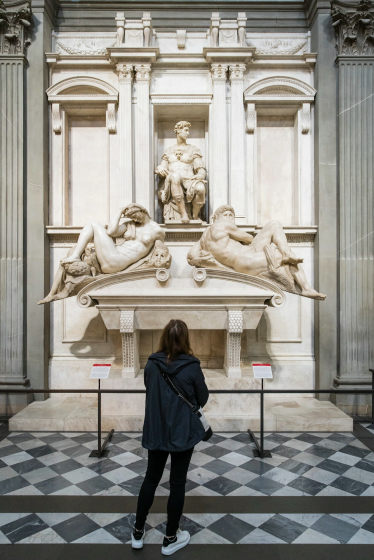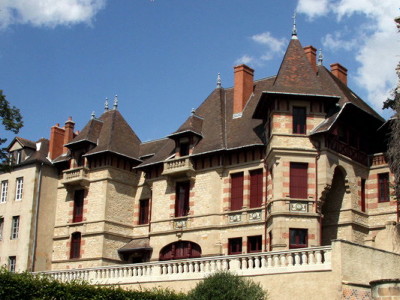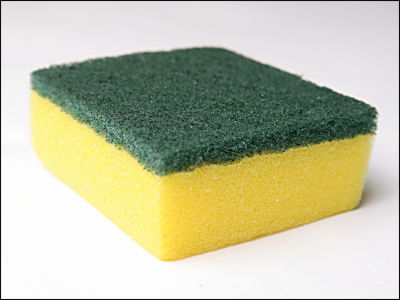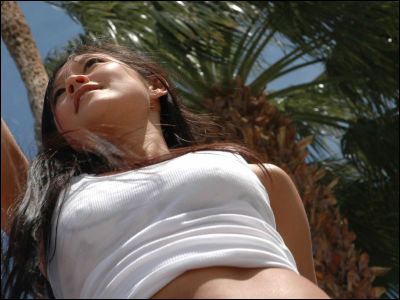What is the project to feed Michelangelo's sculptures to 'fungi'?

Bacteria not only harm the human body, but are also used in various ways such as
Send in the Bugs. The Michelangelos Need Cleaning. --The New York Times
https://www.nytimes.com/2021/05/30/arts/bacteria-cleaning-michelangelo-medici-restoration.html
Michelangelo, who is said to have had a great influence on all fields of Western art history, left many works in his life as a sculptor and architect. Inside the Medici Chapel , the New Sacristy is Michelangelo's masterpiece and has been visited by many people hundreds of years after its construction.
However, at the time of construction in the 16th century, the sarcophagus was found to be dirty and discolored. In addition, the sculpture on the sarcophagus was used many times to make replicas, and the discoloration became larger due to the residue left each time. A large-scale repair work in 1988 removed the residue, but it was revealed that the metal brush left scratches on the sculpture. In addition, the walls were soiled by the humidity and the handprints of visitors for many years, and the situation worsened over time.
According to art restorer Daniela Mana, one of the stains on the sarcophagus is due to the assassinated corpse of Alessandro de'Medici being buried without proper removal of its internal organs. .. Over the centuries, Alessandro's body fluids soaked into the marble, creating stubborn stains on the cist. The cleaner the entire Medici chapel, the more noticeable the dirt on the sarcophagus of Lorenzo II de Medici, who was buried with Alessandro.
On the right side below is the sarcophagus of Lorenzo II de'Medici. It is decorated with two sculptures by Michelangelo, 'Yugure' and 'Dawn'. This image is after cleaning ...

Originally, the sarcophagus was dirty as follows.

A team of Manna and Monica Bietti, the former director of the Medici Chapel Museum, solved these stains with 'fungi.'
The project will start in 2019. First, in November 2019, the Medici Chapel Museum convened the Italian National Research Council,
Based on this information, biologist Anna Rosa Sprocati selects bacteria suitable for 'sculpture cleaning' from a collection of more than 1000 strains. Mr. Sprocati is usually the person who deals with bacteria to break down spilled oil and to reduce the toxicity of heavy metals.
The repair team conducted tests using eight selected strains. Below is a 'pallet' for testing conducted behind the altar.

First, Mr. Sprocati tried to clean the mausoleum of Giuliano de'Medici. This mausoleum is decorated with Michelangelo's 'day' and 'night' sculptures. One of the two sculptures was a woman and the other was a man, and the team first sprinkled the hair of the woman's sculpture with a fungus called 'CONC11',

However, a more cautious approach was required for the sculptural 'face' that attracted human attention. For this reason, the face is said to be 'packed' with xanthan gum , a polysaccharide that is born from a bacterium called xanthomonas campestris that occurs in cabbage and Chinese cabbage and is used as a stabilizer for toothpaste and lotion.
The outbreak of the new coronavirus infection (COVID-19) in February 2020 forced the project to be suspended, but the Medici Chapel reopened in mid-October in a shorter time. Resume. Alessandro's sarcophagus, which was heavily soiled, is said to have regained its beautiful appearance after the phosphate stains derived from the body were cleaned by the Serratia marcescens 'SH7'.
Related Posts:
in Art, Posted by darkhorse_log







